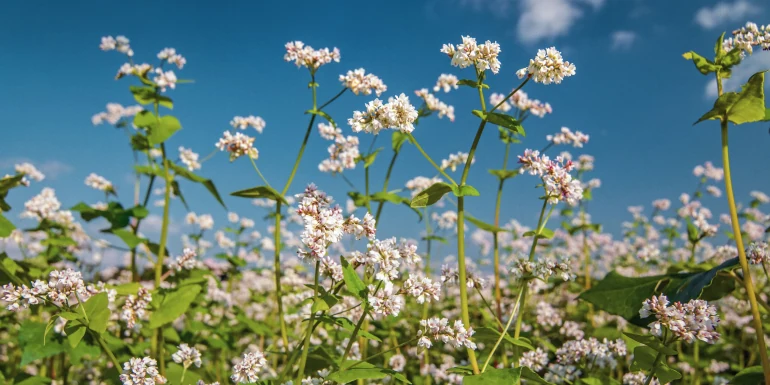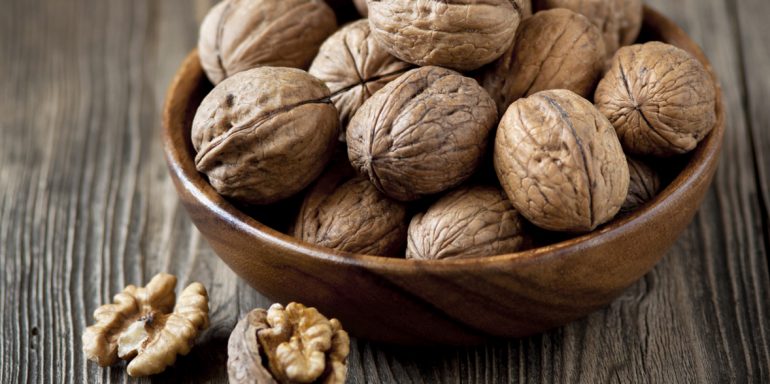
Stimulant for heart and circulation: rosemary
Its essence stimulates the mind, awakens a sense of desire and warms the body. Rosemary promotes blood circulation, thus helping to normalise low blood pressure. Moreover, it aids digestion, alleviates muscle and joint pain and improves concentration.
In Ancient Greece, rosemary was dedicated to Aphrodite – the goddess of love. A rosemary wreath decorated the bride's head at weddings as a symbol of love, fertility and loyalty. The plant also served as a sign of commemorating the deceased: mourners decorated the coffin with the fragrant sprigs. In the 16th century, rosemary became a well-known fountain of youth: the «Aqua Reginae Hungariae» extracted from fresh leaves went down in history as the first distilled perfume.
It got its name from Queen Isabella of Hungary. She had been given the water by a hermit as a remedy against age-related rheumatic ailments. The King of Poland is said to have asked for her hand in marriage (at the time the queen was 72 years old), because thanks to this miracle distillate she not only recovered but was also rejuvenated.
Invigorating fountain of youth
Rosemary promotes blood circulation and warms the body. It bolsters circulation, thus counteracting blood pressure which is too low. It eliminates fatigue and improves efficiency and memory. If applied internally or externally, it relieves rheumatic muscle and joint pain thanks to its blood circulation-enhancing effect. Rosemary also eases menstrual cramps and allows the blood to flow again without any pain. It is also effective against flatulence and bloating, aids the digestion of fat and eases cramps in the bile ducts and small intestine. Thanks to its warming effect, when applied externally it has proven to be effective even in case of chronic liver diseases.
Leaves like needles
The plant is an evergreen subshrub which can grow up to one and a half metres tall. Its upright branches are densely branched and square. In the second year, they start to lignify in the bottom section. The needle-shaped leaves grow spirally arranged on the youngest sprigs. On the top side they are coarse, leathery and dark green. The edges of the leaves are curled up, so that only a narrow, white-tomentose stripe is visible from underneath. In the leaf axils, the blue-purple Lamiaceae grow on short side shoots. Rosemary has a characteristic, resinous and aromatic fragrance.
As a tea
Pour 150 ml of boiling water over a teaspoon of rosemary leaves (2 g), cover and allow to steep for 10 minutes. Then put through a sieve. In case of poor digestion and internal coldness, drink one cup with meals three to four times a day. If your blood pressure is too low, drink one cup between meals two to three times a day. If the tea stimulates you too much in the evenings, take the last cup before 4 p.m.
As a spagyric blend
Those who have trouble concentrating should try a spagyric blend of 10 ml Rosmarinus officinalis, 10 ml Ginkgo biloba and 5 ml each of Hypericum perforatum and Angelica archangelica. Over a period of at least three weeks and a maximum of three months, spray three puffs of this blend directly into your mouth three times a day.



Newsletter
Find out more about current health issues every month and get all the information you need about our attractive offers from all Helsana Group companies * delivered by e-mail to read whenever it suits you. Our newsletter is free of charge and you can sign up here:
We did not receive your information. Please try again later.
* The Helsana Group comprises Helsana Insurance Company Ltd, Helsana Supplementary Insurances Ltd and Helsana Accidents Ltd.